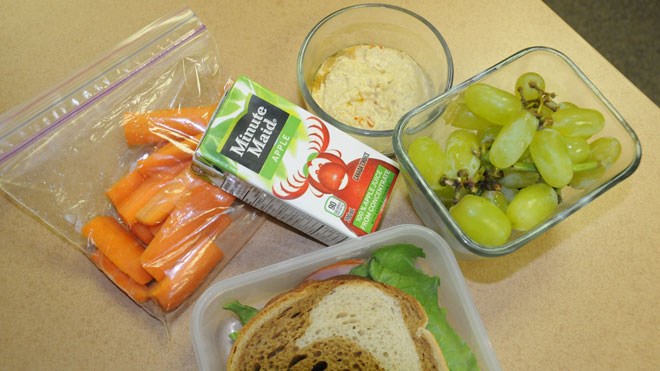If the idea of the new school year makes you shudder because it means coming up with ideas for healthy lunches for your kids, the Heart and Stroke Foundation is here to help.
Through its Time to Start campaign, the foundation is arming parents with tips and tricks to pack nutritious options kids will love.
According to a poll conducted as part of the campaign, 81 per cent of parents provide children with lunches packed at home.
However, 22 per cent of parents say that their children are picky eaters, and 14 per cent cited lack of time as the biggest challenge they face in trying to make healthy lunches.
Samara Foisy, a registered dietitian with the Heart and Stroke Foundation's Health Check program, said these statistics show her that parents struggle with figuring out what healthy items their children will actually eat.
But she said it's worth the effort, as kids' health is at stake. Ensuring children are eating nutritious foods reduces their chances of becoming overweight or obese, and also helps them to concentrate and perform better in school, Foisy said.
She advises lunches should include three out of the four food groups. An example of a balanced lunch would be vegetable soup with a small whole-wheat bun and yogurt.
Packing healthy lunches doesn't necessarily need to be an onerous task, she said. To avoid the stress of last-minute lunches, Foisy suggests doing prep work such as cutting fruit or vegetables and packing them into containers the night before.
You can also make several sandwiches at once and freeze them until they're needed. They'll act as an ice pack for the child's lunch, and will thaw by the time they're ready to eat.
“You can vary the contents of them, like tuna salad and meat and cheese,” she said. “All these things freeze really well.”
Leftovers also work well as lunches, Foisy said. “So if you make dinner the night before, and you know that's your child's favourite dinner, make a bigger batch, and put it in their lunch for the next day,” she said.
What people should avoid are the overly-processed food items marketed to kids and parents as lunch items, Foisy said.
Even if children ask for these types of foods, she calls this a “teachable moment,” as parents can use the opportunity to explain about healthy eating.
If lunches often come back home uneaten, Foisy said bringing kids to the grocery store and involving them in preparing lunches is key to getting them to eat and enjoy what's packed in their lunch.
“I think it's really great, because it's an educational experience for them,” she said. “It gets them excited about healthy eating and foods, and it gives them a chance to have input on ingredients and suggestions for meals.”
It also helps to vary what you're packing in kids' lunches so they don't get bored of what they're eating, Foisy said.
In terms of what age kids should be taking responsibility for their own lunches, she said there's no hard and fast rule for that, as it depends on the maturity and skills of the individual child.
If you're looking for inspiration, she suggests visiting the Health Check website, www.healthcheck.org, where people can access menu plans and recipes for healthy lunches.
As well, visitors to Health Check and the Heart and Stroke Foundation's Facebook page, www.facebook.com/heartandstroke) can enter the Time to Start contest for the opportunity to win one of 10 $1,000 grocery cards.
Join Sudbury.com+
- Messages
- Post a Listing
- Your Listings
- Your Profile
- Your Subscriptions
- Your Likes
- Your Business
- Support Local News
- Payment History
Sudbury.com+ members
Already a +member?
Not a +member?
Sign up for a Sudbury.com+ account for instant access to upcoming contests, local offers, auctions and so much more.
